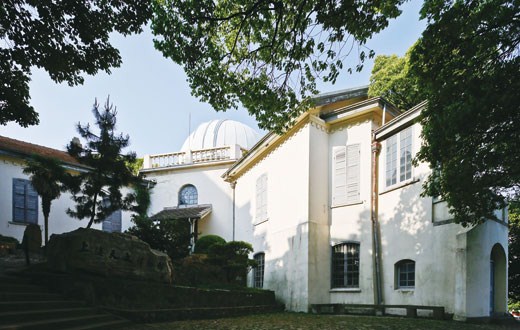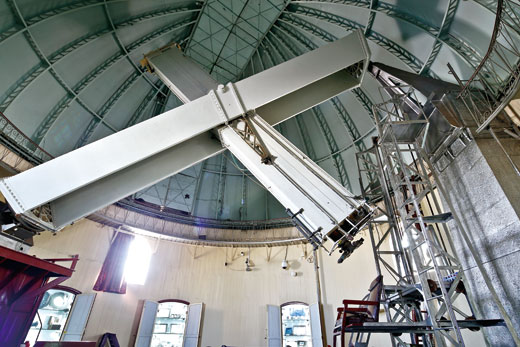


Renovation of old buildings doesn't necessarily come at the expense of heritage charm.
The century-old Songjiang Observatory, perched on Sheshan Hill in Shanghai, has undergone six months of maintenance and repair, but the plain, cement-mortar walls, wooden louvered windows and cobblestone lanes are still there.
The observatory has reopened to the public since February.
"For a heritage building, the most important thing is to keep its original appearance, cure any of its 'ailments' and prolong its life," said Cao Yongkang, an associate professor at Shanghai Jiao Tong University and director of its International Research Center of Architectural Heritage Culture. He was in charge of the observatory project.
Last May, the iconic structure observatory was listed among China's national cultural heritage buildings. However, after about 100 years, the observatory needed some tender loving care. Its roadways were ragged, and the exterior walls had lost their original look.
Biggest renovation
Last year, the biggest renovation ever undertaken at the site began. The project was designed to restore old lanes, renovate walls, and repair the roofs and the fences. In addition, trees and flowers were planted and the surveillance and fire systems were beefed up.
One of the key parts of the project related to exterior work. "The walls had been repainted many times since the 1980s," Cao said. "When we did research, we found many cracks were undermining the strength of the walls. Paint used in the past was airtight, but the walls needed to breathe."
High-polymer paints acted like a film covering the walls and preventing water vapor from being discharged. That resulted in a buildup of salts and microorganisms in the humid environment, the professor said.
Breathing paints
To clean the walls, the team used an electromagnetic, nondestructive technique widely employed on old buildings.
The observatory's walls were made of cement-mortar, a very popular material at the turn of the last century. Researchers mixed garnet powder with water and ran it through a high-pressure jet to gently grind off the old paint.
"The traditional method takes aesthetics into consideration," Cao said. "Using paint to renovate wall was very popular during 1980s, but no one thought about its adverse effects."
Sheshan's environment is one of great humidity and big temperature gradients between night and day. So how to protect the walls from moisture while letting them "breathe?"
Quite simple, said the profession. A moisture repellent is applied. It protects cracks of under 1 millimeter. For bigger cracks, the repellent is injected into the cracks, one by one.
Another important part of the project was repair to the doors and the louver windows. Fences were also cleaned and restored, reviving the original look of the observatory.
The main road that leads to the front gate was kept in red brick stones and was widened by anti-skidding slab-stones. Concrete sections of the pathways within the observatory complex zone were removed to restore the original cobblestones.
"China is still in its infancy where preservation of heritage buildings is concerned," Cao said. "Some of the workers at the site had never been involved with a project like this. I hope the observatory project will be a good start for the industry."
Copyright ©1999-2018
Chinanews.com. All rights reserved.
Reproduction in whole or in part without permission is prohibited.